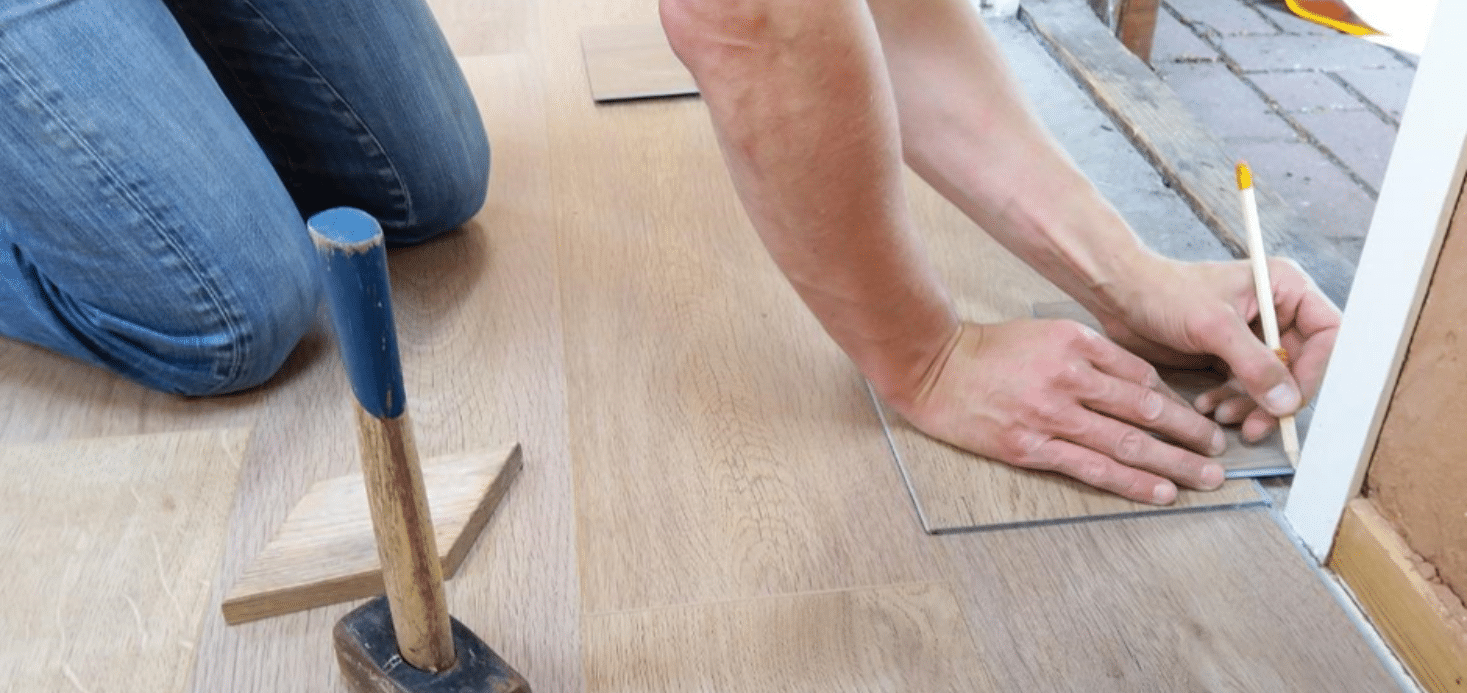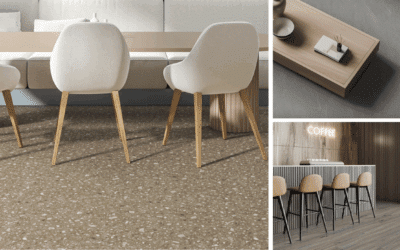If you’re in the market for a floating floor, then maybe you’re wondering, what’s a floating floor? How does this style of floor work? And how hard is it to install? Well, you’ve come to the right place.
In the following article, we will answer all of these questions, and run through the pros and cons and various available options.
Before we get into it, we will quickly go over what a floating floor is:
A floating floor is a type of flooring that’s installed without nails or glue. Instead, it’s held in place by both gravity and friction. The majority of floating floorboards have a clip-lock system that fits all the boards together. This system results in the whole floor being one big, heavy board, which holds itself together. The use of baseboards can also help to keep a floating floor in place.
In the past, this type of flooring was only common with laminate, but this system has now progressed to other varieties such as bamboo, engineered, hybrid, and vinyl planks. Another thing to be aware of is that floating floors should be installed on top of some form of underlay. This underlay will help with friction, reducing movement and stopping the floor from squeaking.
Where Can I Install a Floating Floor?
The answer to this question is my number one reason to install a floating floor: a floating floor can be installed anywhere.
The beauty of floating floors is that they can make a huge difference to any room in the house. They’re straightforward to install as well as needing very minimal surface prep. Say you have a tiled bathroom that you want a floating floor in. Simply throw down some decent underlay, and you can lay your floor straight over the tiles. I’ve also had clients with old hardwood flooring who laid floating flooring straight over the top of that. This saves time, money, and a lot of mess.
Of course, there are certain things you’ll have to keep in mind. For example, if you want a floating floor in your bathroom, you’ll need flooring that can withstand moisture and humidity. Luckily, that isn’t hard to find these days.
Types of Floating Floors:
Laminate
Laminate was the original type of flooring used for floating floors. This type of flooring is made up of wood composite material, which is pressed together at high temperatures. Once the plank is formed, it is topped with a printed timber look-a-like layer, which gives it a wood-like look. On top of the printed layer, there’s a thin wear layer that creates durability and scratch-resistant properties.
This type of floating floor is perfect for anyone looking to cut down on costs while still getting a great looking finish.
Vinyl Plank
Vinyl plank flooring is created the same as laminate flooring, however, instead of combining wood composite materials, vinyl planks use 100% synthetic materials. This means that this type of flooring is 100% waterproof. Vinyl is very soft underfoot, relatively cheap, and easy to install.
Engineered
Engineered flooring is made by pressing multiple layers of plywood together and then adding a real timber veneer face. The process helps create excellent water resistance and makes for a visually stunning plank. This type of flooring has great durability and stability. Another plus with engineered flooring is that it can be sanded and stained if necessary. This means that after a while you can freshen your floor up without needing a whole new one.
Hybrid
Hybrid flooring is one of the latest crazes in the flooring world. This new variety of flooring is made up by using both laminate and vinyl flooring. This gives the best of both worlds as the flooring is affordable, waterproof, and produces a great-looking floor. Hybrid flooring also has the same wear layer as laminate, making it both wear and scratch resistant.
Pros and Cons of Floating Floors
In the following section, we will run through some pros and cons of floating floors to help you decide if this style of flooring is right for you.
Pros
- Easy installation. One of the main reasons I would recommend floating flooring to someone is because of its easy installation. Because of the floor’s clip-lock system, it requires no glue or nails. If you have only a saw and a tape measure, you can install your floating floor. It’s that easy.
- Cost-effective. Another great reason to pick a floating floor is because of how cost-effective they are. This is due to the reasons mentioned above, such as that you can install it yourself, which will save you money from hiring someone. Plus, this system also doesn’t use glue or nails which will also save you money. Another thing that helps save money is the fact that floating floors can be installed over old flooring or tiles, which saves with removal and disposal fees.
- Easy to repair. My third and final reason to install a floating floor is the fact they’re easy to repair. Because they’re not glued or nailed down, it makes them easy to remove and replace. If a plank does happen to get damaged and needs replacing, just remove the baseboard and remove the flooring until you get to your damaged board. Replace the damaged board, click the rest of the flooring back in place, and then re-install the baseboard you have removed… Nice and simple.
Cons
- May increase sound. One problem with a floating floor is that it may increase the sound of footsteps. This is due to the air gap between the floating floor and the underlay or subfloor. A high-quality underlay can limit an air gap and produce the same results as a glued or nailed-down floor.
- Structural Durability. Another problem with floating floors is their increased susceptibility to expansion and contraction. This is due to the floor not being glued or nailed down, which can allow for movement during temperature fluctuations. This means you may see a higher chance of cupping or warping compared to glued or nailed-down floors.
- They can’t be refinished. Well, they mostly can’t. If you’re using an engineered floating floor, then you’ll be able to refinish your floor a few times. You’ll just need to keep in mind that you only have a thin layer of real wood to work with. For all other types of floating floors, you won’t have the option to do this. So make sure you pick the right color and finish, as once it’s selected you won’t be able to alter it.
Summary
With many different types of flooring out there, choosing the right option isn’t always obvious.
That’s why it’s great to have a basic understanding of the various types of flooring before you purchase one. Floating floors are a great option if you’re looking to spice up your house at a low cost. They’re easy to install and repair. They do have a few downsides, but you definitely get your money’s worth when purchasing from a decent supplier.
In the market for a new floor, flooring tools, or accessories?
Look no further than Panel Town & Floors. We’re your one-stop shop for all things flooring and can assist you with the purchase and installation of your new floor.



